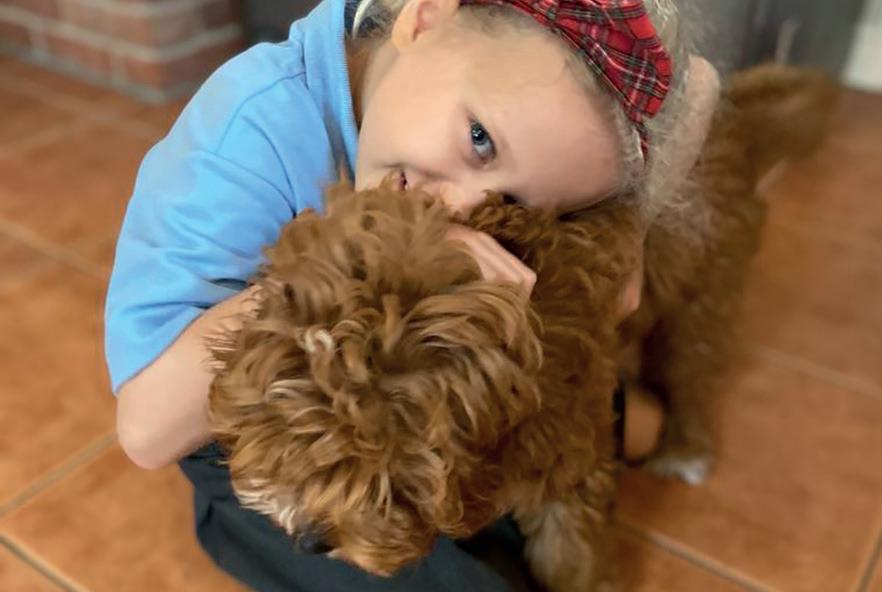
3 minute read
My Daughter Wants... A Maltipoo
This is a sentence I never expected to say, considering her lifelong apprehension of dogs and general lack of interest in animals.
Aside from processing the initial surprise of this sudden, desperate desire, and the price tag of an ethically bred Maltese cross Poodle puppy, I have been contemplating the possible benefits of pet ownership for both of my children.
Advertisement
Psychiatric studies have demonstrated the benefits of pets for the mental wellbeing of adults and children alike. Potential perks for children include increased self-esteem and confidence, as they are permitted to handle and care for small or vulnerable animals. This also aids in the development of mutually trusting relationships. Being entrusted with a pet to name, feed and nurture can boost the trust a child feels toward their parent or caregiver in return, and observing the trust a pet feels for its family highlights the mutual aspect of the relationship.
A pet can act as recipient of a child’s innermost thoughts and secrets, and this nonverbal communication creates a special bond for children. As most of the affection a child feels for a pet is expressed through playtime and cuddles, this provides plenty of comfort contact for a child. Interaction with animals can teach children about empathy, compassion and responsibility - lessons I feel both my children could benefit from. Another valuable life lesson a pet can provide is the ability to cope with uncertainty. Good and poor health, dealing with the unexpected, accidents, death and bereavement are all a part of life. Having a pet can provide firsthand experience of managing all these things.
Left and right: “Isla & Martha, with Remy”

The element of life with a dog which seems most appealing to families is the physical activity and connection with nature. Some extra motivation to get the children outdoors in every season for adventures and playtime.
For insight into family life with a new puppy, I asked my friend Emily Wallington, fellow Beautician and Norfolk mother of two, about Cavapoo into their home:
“Bringing our fluffy bundle home was scary, exciting and everything in between. It wasn’t a decision we took lightly, and I had spent months preparing. Our eldest fell in love immediately, was a whizz with the training and formed an instant friendship. My youngest was terrified of dogs, didn’t want him inside and would say things like “He’s sooo cute! I think he’d like to go back to his mummy now.” She soon became more used to him and all seemed like it was going well. By day two he could sit, lay, give his paw and roll over. He was cuddly, sleepy and generally the cutest thing ever.

“Week two was a different story. He’d found his feet and his confidence. The puppy biting started and things got much harder. We had a family session with our trainer and learned some great techniques, which helped. We knew the biting was normal – but, oh my goodness, it was a hard few weeks! Our youngest became her experience of welcoming Remy the
really quite frightened of him again. Using the techniques we’d learned and a lot of consistency, it did improve.
“Our puppy is now six months old and although he’s full of energy and has his crazy moments, he’s such a lovely little character and has become a best friend to both of the girls. As expected, there are some limitations on family days out - places he’s not allowed. But having him has opened up a new love of exploring the outdoors as a family. Watching children grow up with an animal is a wonderful thing to experience - from the bonds they form to learning about commitment and responsibility as well as the new adventures it encourages. We have found it a really positive experience, and there is no doubt that our puppy is a hugely valued part of our family. We can’t imagine life without him.”
Article By Missy Hitchcox
Missy Hitchcox is a Norfolk mother of two. She has a background of English Literature and Creative Writing studies. Her professional career has centred on the Beauty industry, and she now home educates her children.










